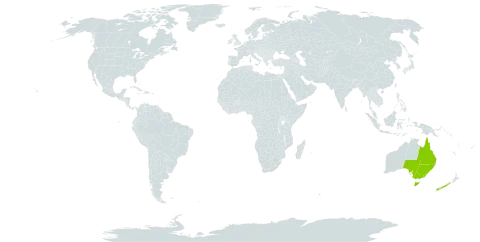Herb, dioecious, perennial, rhizomatous, with cluster roots, forming dense masses; sometimes dying in the centre and forming rings to > 8 m diam. Rhizome erect or shortly ascending or horizontal and extended, stout, up to c. 3 mm diam., villous with brown hairs. Culms much-branched, dark green, usually flexuose, wiry, terete, c. 20–200 cm long, 0.5–1 (–1.5) mm diam., glabrous, erect when short, procumbent or supported by other vegetation when longer; internodes numerous, to 7 cm long. Sheaths and spathes closely appressed, 5.5–12.0 mm long, greenish, with tufts of white axillary hairs, sheath apex often with white hairs; margin narrow, membranous, caducous; lamina patent or reflexed, subulate, 1–6.5 mm long. Male spikelets axillary, mostly singly at upper nodes or 2 or 3 together, few-flowered, 4–8 mm long; glumes 1–3, acuminate to mucronate, usually slightly longer than the flower. Female spikelets 1-flowered, c. 3.5–7.5 mm long, sessile at uppermost nodes; glumes 1–3, 0.9–3.5 mm long, acuminate to mucronate, tightly convolute. Male flowers: tepals 6, equal, narrow-linear, acute to mucronate, 2.6–4.2 mm long, hyaline; filaments 3.2–4.3 mm long; anthers 1.2–2.0 mm long, exserted. Female flowers: tepals 4 or 6, outer tepals longer, 1.3–3.0 mm long, convolute, margin rarely ciliate; inner tepals very short, 0.7–2.0 mm long, closely wrapped around the ovary; style branches 3, shortly united. Nut ovoid, 1.5–2 mm long, 1–1.5 mm wide, pale or dark brown, smooth, glossy, on a short axis, shed with the perianth. Culm anatomy: chlorenchyma of 1 layer of elongated peg-cells, not interrupted, central cavity present.
